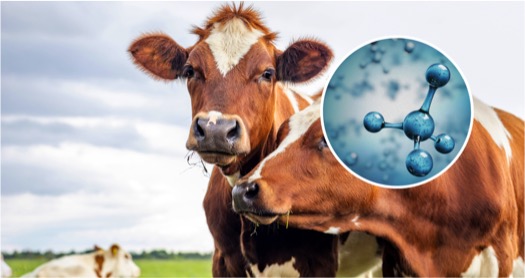Scientists have discovered that some dairy cows produce significantly less methane than others.
While farming is vital for providing food and dairy to the world, it contributes a fair amount of greenhouse gas emissions, which leaders are looking to reduce as climate change worsens.
Agricultural activities accounted for 10.6 percent of all U.S. greenhouse gas emissions in 2021, according to the Environmental Protection Agency.
However, researchers from Massey University in New Zealand have now discovered that some cows actually produce 15 percent less methane emissions—and the good news is that they still produce the same amount of milk.
The scientists’ findings were published on December 13 in the New Zealand Journal of Agricultural Research.
Cows naturally produce methane when they digest food as they have microbes in their stomach that produce methane from the fermentation of their feed. Scientists have previously found that higher quality feed produces less methane than those that are harder to digest.
Methane is the second largest contributor to climate change, behind only carbon dioxide. It is a powerful greenhouse gas that is produced both naturally and as a by-product of human activities.
However, some natural methane sources like the ones that come from cows, are unavoidable.
In the new study, scientists ranked 45 Irish dairy cows by the amount of methane emissions they produced. Those that produced less were found to produce just as much milk.
Just why some cows have lower emissions than others remains uncertain—but the researchers reported that reducing methane emissions from cows could drastically reduce methane levels in the atmosphere, which could bring the world closer to greenhouse gas reduction targets.
“Residual methane emissions are calculated by the difference between the expected and measured enteric methane produced per kg dry matter eaten. Residual methane has previously been identified as a trait that is not related to animal productivity traits, such as milk production,” research lead author Katie Starsmore of Massey University, Teagasc and VistaMilk said in a statement. “The aim of this study was to investigate the ability of this trait to rank and select animals that are producing less methane per kg dry matter intake than expected, and hence more efficient.”
“The average dairy cow in this study was emitting 352g [12.4 ounces] enteric methane per day and eating 16.6 kg dry matter. Ranking animals based on their residual methane resulted in a reduction in daily methane output by 15 percent and no effect on productivity. There are animals that are producing less methane than expected, while producing the same milk solids and weight the same.”
Overall, the scientists represent an opportunity to, in future, only use cows that produce a lower amount of methane.
Source : Newsweek Dec 13th 2023 by Robyn White

